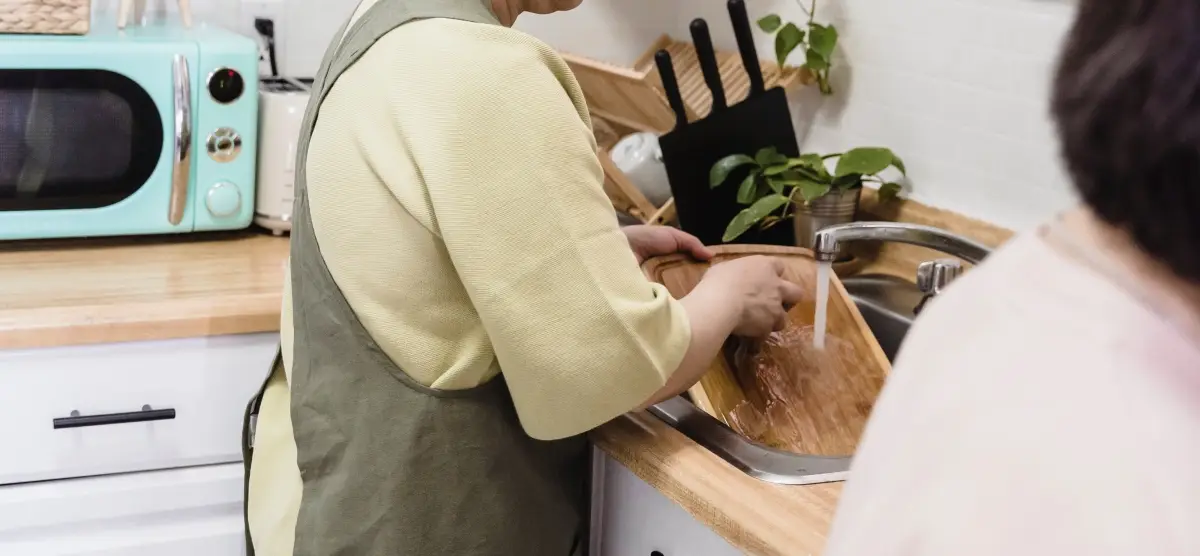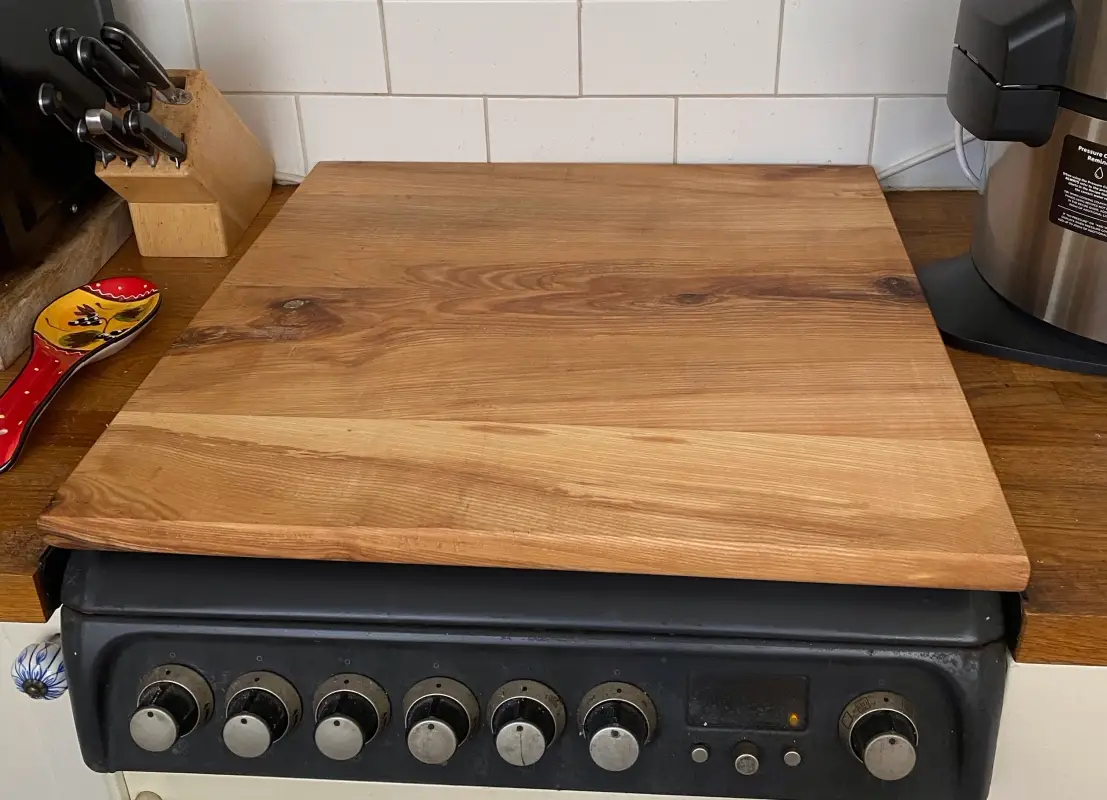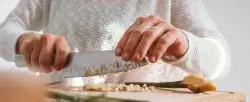How to properly clean a chopping board

Regardless of whether you use your chopping board occasionally or rely on it daily, one thing remains constant: it must be cleaned regularly. At HANDMADE, we understand the importance of maintaining a clean chopping board to ensure the safety and hygiene of your kitchen. In this article, we will guide you through two essential types of cleaning: simple cleaning after each use and a more comprehensive, professional cleaning to be done at regular intervals. By following these guidelines, you can extend the life of your chopping board and ensure a safe food preparation environment for you and your family.
Important advice before you start
The most important tip I would like you to keep from this article is that hot water bends wood. Yes, you heard me right. If you want to give your chopping board the shape of a ski, when you clean it make sure you use hot water that will be absorbed by the fiber of the board and will change the direction of stretching of the fiber just like a muscle over which you pour hot water.
If somehow your chopping board is bent after washing, to straighten it back, I recommend you to wash it again with hot water and then immediately after you wash and wipe it, place it on a flat surface (such as the floor) and to put a rather large weight on it. Another option is to put the drip on the kitchen table and leave it there overnight to straighten up.
After it has straightened, it is highly recommended to oil it and leave it to dry for a few minutes so that the oil will absorb into the fiber and create a barrier against water that will protect it in future washes. This protection will only be valid if the water used for washing is warm and not boiling because hot water will soften the oil and remove it from the surface of the chopping board.
Another important factor that bends wood is a strong heat source (for example, many of us put a chopping board on the stove that has just been turned off but is still hot). To begin with, it is important to remember that wood contains water. no matter how dry it is, it will still contain a small percentage of water. In industry, the wood used to make products has a humidity between 5 and 8 percent, but it will never have 0. Once a wooden product is used, when it is cleaned, it will absorb a part of the water and its internal humidity will increase.
When a piece of wood is near a heat source, the water in the wood will boil and cause its fiber to contract, which will lead to bending of the wood.
If you have nowhere to keep a chopping board except near a source (as seen in the image below) of strong heat, then try to put it there after it is well dry if you have just washed it and it is important to turn it over regularly (preferably after each wash) so that the same side is not always exposed to heat.

In this picture is the 60cm BIGBOI butcher chopping board that is made by HANDAMDE and the picture was provided by a customer to whom we thank.
Simple Cleaning After Each Use
1. Gather Your Supplies:
- Dish soap
- A sponge or scrub brush
- Hot water
- Clean, dry towel or paper towels
2. Rinse the Board:
After you finish using your chopping board, immediately rinse it under hot water. This helps remove any loose food particles and makes the cleaning process easier.
3. Apply Dish Soap:
Squirt a small amount of dish soap onto the board. Use a sponge or scrub brush to spread the soap evenly across the surface.
4. Scrub Gently:
Use the sponge or scrub brush to gently scrub the chopping board, paying extra attention to any stubborn stains or residue. Avoid using abrasive scouring pads, as they can damage the board's surface.
5. Rinse Thoroughly:
Rinse the chopping board thoroughly with hot water to remove all traces of soap and food debris.
5. Dry Completely:
Pat the board dry with a clean towel or paper towels. Properly drying the board is essential to prevent moisture from lingering, as it can lead to warping and bacterial growth.
Professional Cleaning at Regular Intervals
1. Gather Your Supplies:
- Coarse salt
- Lemon or white vinegar
- A soft cloth or sponge
- Mineral oil or cutting board oil
2. Create a Paste:
Mix a generous amount of coarse salt with lemon juice or white vinegar to create a paste. The acid in these ingredients helps to break down stains and kill bacteria.
3. Apply the Paste:
Spread the paste evenly over the entire surface of the chopping board.
4. Scrub Gently:
Use a soft cloth or sponge to gently scrub the chopping board, focusing on any stains or discoloration. The abrasive salt will help remove stains, while the acid will sanitize the board.
5. Rinse and Dry:
Rinse the chopping board with hot water to remove the paste thoroughly. Pat it dry with a clean towel or paper towels.
6. Oil the Board:
To maintain the chopping board's integrity and prevent it from drying out or cracking, apply a small amount of mineral oil or cutting board oil to the surface. This step helps maintain the board's finish and prevents it from absorbing liquids or odors.
Conclusion
Properly cleaning and maintaining your chopping board is crucial for a safe and hygienic kitchen. By following these simple and professional cleaning tips, you can extend the life of your chopping board and ensure that it remains a reliable tool in your culinary adventures. Remember to perform simple cleaning after each use and schedule professional cleaning at regular intervals to keep your chopping board in tip-top condition. With proper care, your chopping board will serve you well for years to come, making every meal preparation a breeze.









